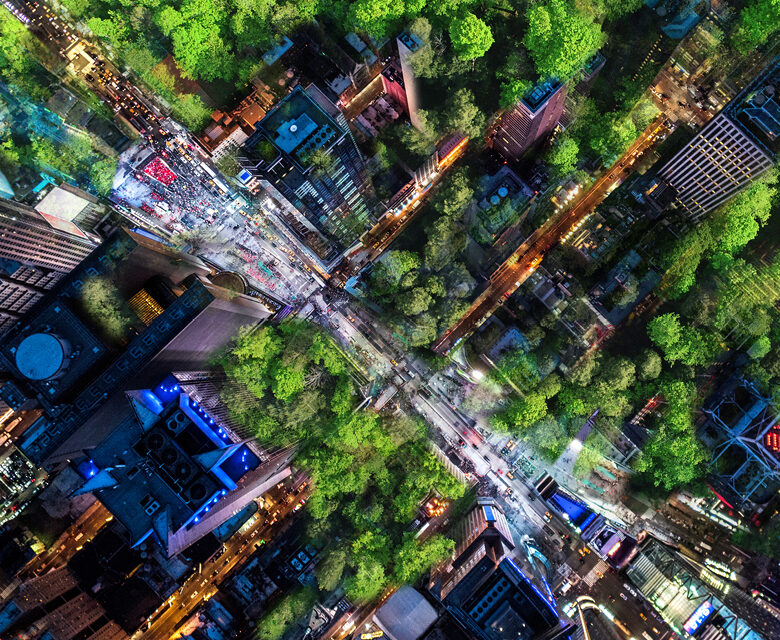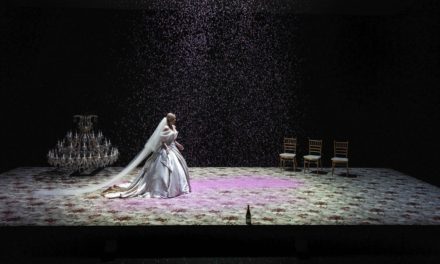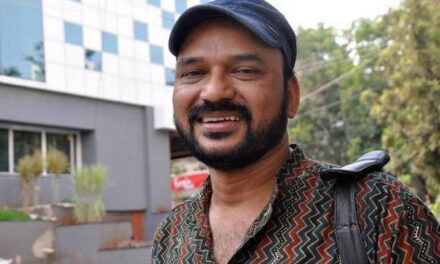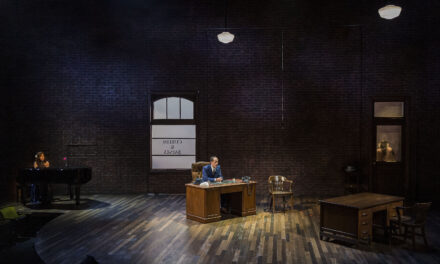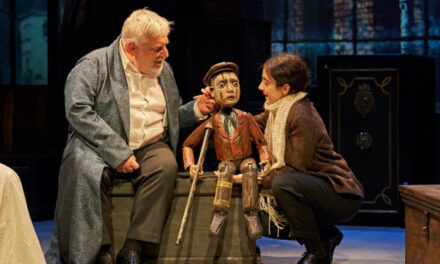Created by theatre-artist Geoff Sobelle and composer-performer Pamela Z, Times3 (Times x Times x Times) is a sonic odyssey to the far side of New York City’s Times Square. Through this masterwork, the iconic public site becomes an ephemeral world stage where wayfarers surf the fabric of time and space.
The groundbreaking new work premiered on January 9, 2021, as part of the trend-setting PROTOTYPE festival, which presents modern multifaceted opera-theatre and music-theatre works from across the world. Sobelle and Z have sculpted a magical world of sound and space where all time is simultaneous.
The audience is asked to take a walk in Times Square to hear a score specifically crafted for this moment. Participants also listened to the orchestral wonder in the comfort of their homes by means of SoundCloud. The new vocal performance encourages the audience to experience the City—past, present, and future. To that end, the work integrates through lines to a time when the Indigenous communities native to Manhattan flourished.
Through the use of instrumentalists and voices sampled from literary scholars and historians, such Jack Tchen and Eric Sanderson, the composition transports one to “a city carved by countless hands from a place once thick with trees…which may be headed that way again.” With five global extinction events in the fossil record, the work examines the current ecosystem and asks some fundamental questions about a city of 8.4 million people. What was this place? What is this place? And how did we get here?
Drawing inspiration from the City’s soundscape and a Broadway musical from 1961, Pamela Z comments on the creative process: “The other thing I wanted to mention is that I actually use a sample of a subway station ambient where you hear the sound of the subway. I took that famous sound the undercarriage of the subway cars make as the car leaves the station that sounds like ‘Somewhere’ from West Side Story. Lots of people have identified that interval…There’s a place for us; I love that sound so much and I know it so well.” Z continued adding, “And I actually transcribe the notes for that for some instruments and then had it played and so you’re actually hearing instruments like a violin and a trumpet playing those pitches, and then it’s blended with the actual subway sound but those instruments are still in there. And then later in that sort of listening and repeating section, I sing it myself and so you hear it again but in my voice.”
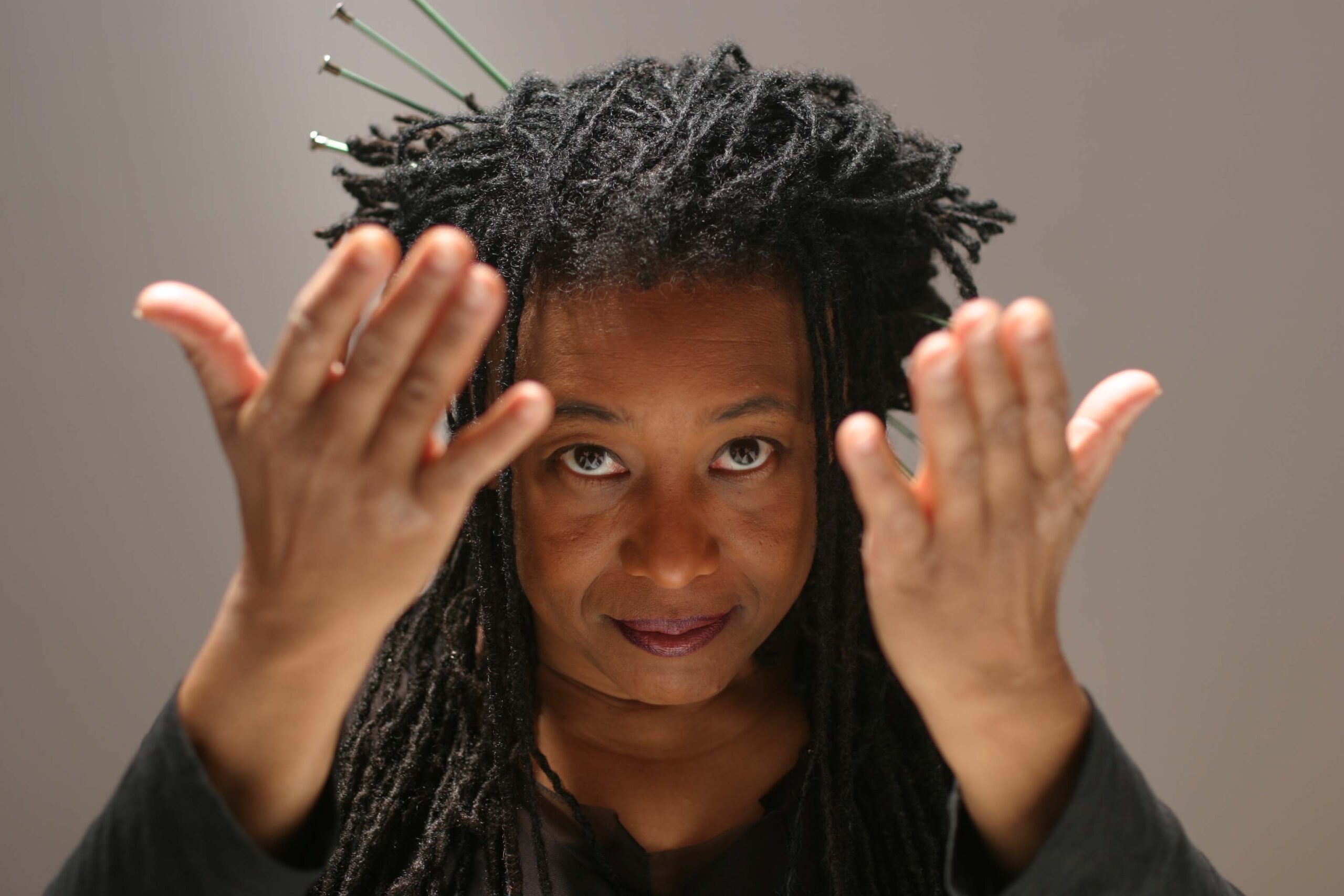
Pamela Z. Photo Credit: Donald Swearingen
The composition, which is 30 minutes and 33 seconds long, has the power to make a positive, lasting impact on the world. The triad corresponds to the essence of mind, body, and spirit. The music was created in consequence of impressions of space, offering a refreshed approach to social dynamics — the opportunity to co-create a probability. Tom Dambly on Trumpet, Todd Reynolds on Violin, Crystal Pascucci on Cello performed the ensemble composition. With so many layers, there is a rich tapestry of ideas to examine.
Like some quantum-computer operator, conductor Pamela Z asks the participants to tune themselves to the forces underfoot and to imagine. The piece takes us back in time and down the road, creating moments where the collective becomes a driving force for future outcomes.
The media artist works with voice, live electronic processing, sampled sound, and video. Before her large-scale multi-media works, Z honed her craft at CBGB, 313 Gallery on the Bowery, and the Knitting Factory where experimental music was thriving. Z takes us back to early 1990s New York City and the downtown new music scene, which helped to form a cultural zeitgeist. Z spells out how her ongoing work had been informed by the downtown new music scene: “There’s a through-line to it. I don’t think that there was a dividing place in any point in time. I just think these things have slowly affected each other. She continued, adding, “I guess when we think about downtown in New York there’s always been this downtown versus uptown kind of a paradigm. I think it’s really amazing when I think about people like the Bang on a Can folks; they’re some of the people that have been really instrumental in kind of breaking down those lines and making things bleed from one place to another and I remember when the Bang on a Can marathon first started it was a downtown thing and then at some point, it was at Lincoln Center.”
Creating the space for the new to enter is a theme that plays out in Z’s work. “Actually I think the first time I ever played on the Bang on a Can Marathon was at Alice Tully Hall in Lincoln Center. When you look at what’s programmed on that festival it’s this wide range of people who are all doing essentially contemporary music of some kind and all very adventurous, but some from more of a chamber music kind of attitude and some more from you know another kind of approach. And so for me there’s always just been a bleed between all of those things,” said Z.
Contemplating the mystical phenomenon of happenstance, Z reflects on her journey as an artist: “I think in a way it’s a metaphor for my own life because my own progression as an artist I sort of went through it when I was in music school. I was studying classical music and singing opera arias in Bel Canto vocal technique and outside of school I was being sort of like a singer-songwriter and playing in clubs and busking and doing all of this. And it was like there was almost like a weird chasm or something between those two things.”
Throughout her time as an artist, Z has composed scores for dance, film, and chamber ensembles. “I feel like the moment I really found my voice as an artist was where all of those different tentacles of things that I was interested in began to intermingle with each other,” said Z. “And so, I feel like that is sort of happened at large with the contemporary music scene as well you know and then having gigs at CBGB and then playing in Alice Tully Hall within the same period of time is an interesting thing I think,” chuckled Z.
The work of sound and space transports the listener to a realm where the City and score fuse and fall apart and harmonize afresh. Sobelle explains: “I think there’s so much space for a chance to rhyme between the experience and what is there like I think hearing about the subway and feeling the rumble under your feet is something that is almost predictable and I think it’s in an experience like this I think it’s just really pleasurable when there’s this kind of opportunity for kismet and you hear about a taxi cab as one is flying around the corner.”
Z uncovers the realities of serendipity and highlights the awe of synchronicity: “it just happens that right at the time that we’re saying you know something in the sound piece that you look up and there in fact is that thing then that becomes like a whole another layer to bite your teeth into to sort of enjoying and I think it could be really delicious.” She continued, adding, “There was a place in the piece where I had asked the audience to imitate the sounds that they hear to try to vocalize them. And there’s a little mix that I made that follows me asking that is of mostly my voice but partially Geoff’s voice doing exactly what we asked them to do so there is the sound of Geoff imitating an airplane going overhead…and then all the other sounds were my voice.”
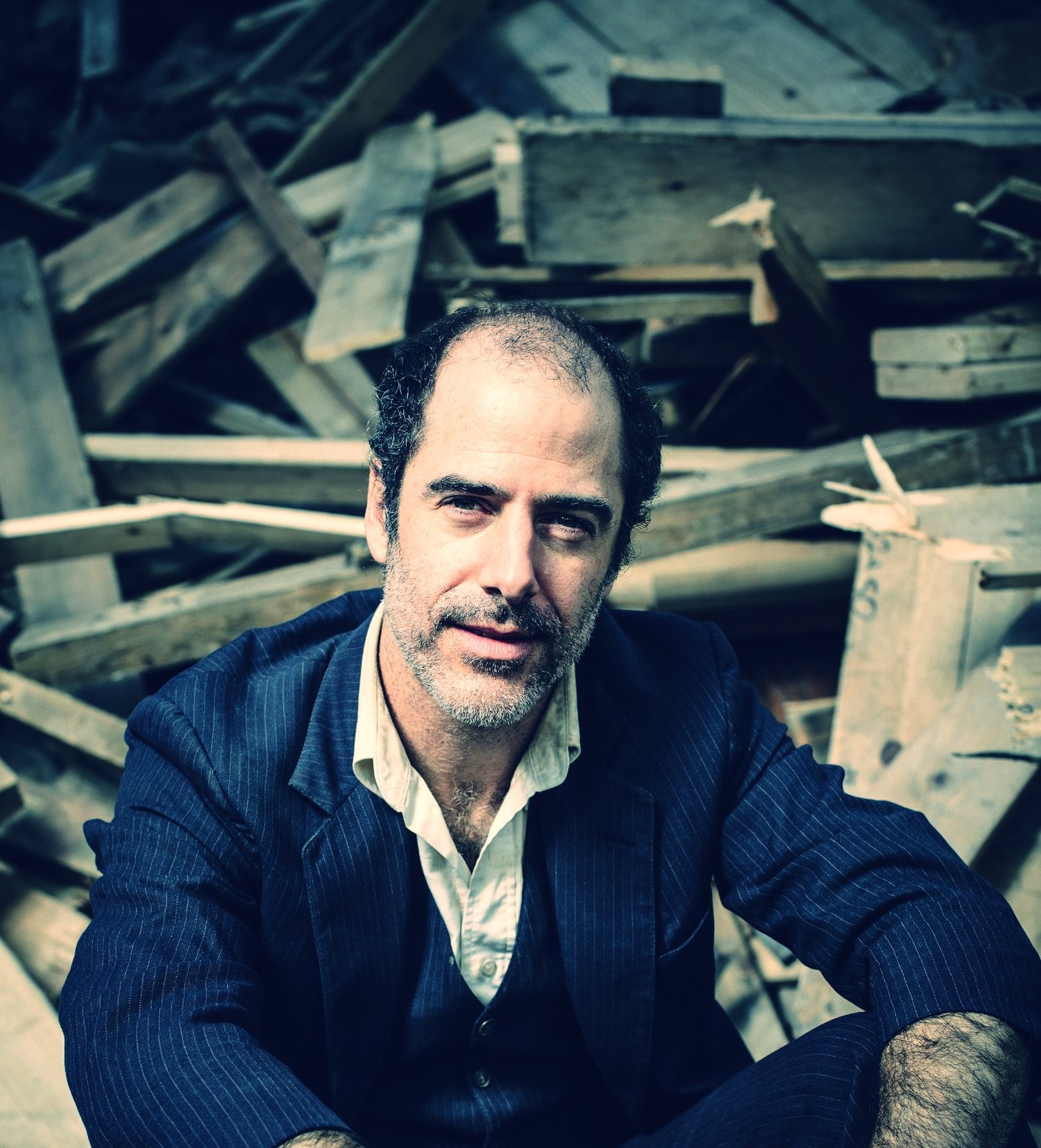
Geoff Sobelle.
When it comes to discussions regarding the work’s magnitude, Z gives an explanation: “Well I’ll just be completely honest, I thought it was important to do it because I’ve been asked to do it,” quipped Z. “But It wasn’t until after I started working on it that I began to see that there was a lot of other significance in doing it right now. Historically, I think this moment that we’re in is going to stand out even after time goes by. There are just too many crazy things that have happened and are happening at this moment for us to just file this is as just another year, another time and so I think to get some historical perspective and some sort of future-looking perspective at a time like this is useful I think,” said Z.
On the topic of the performance’s significance, Sobelle continued Z’s sentiment adding, “Yeah I think it’s useful and it was meant for us as a moment of pause and a way for the listener to, assuming that a lot of them are New Yorkers but it doesn’t really matter. It’s a place to look at your city again and look at your space again and do it with deep listening.” He continued adding, “In a way, we’re giving the strange gift right now in the performance world, which is that we can’t go to the theater. I know that sounds odd because that’s our bread-and-butter and it’s a place for me, it’s like what we do, but we can’t, so it’s a chance to listen instead.”
Sobelle comments on creative development, collaboration with Pamela Z, and the act of listening: “Pamela has so much shown me that just the true power to listening to the smallest phonemes in people’s voices to really lean in and really listen. It teaches us that and I think to listen to the city and listen to this moment, it’s a piece for listening so it seems appropriate.”
Through the blending of timelines, the story achieves its primary effect, inspiring audiences to stand in awe of what is possible—a prompt for humanity to co-create an imagined future. “For an ending for the piece, it was nice to kind of leave people hanging like we’re going to go but you know, you stay here and tie your sweater around on your knees and try walking around like that for a while and see how that feels. Just try some things. You don’t have to rush off. Maybe check this out a little more,” said Z.
A multifaceted performance need not be in a theatre on Broadway to be effective. Imaginative works can be arbitrary and improvisational. The work is foremost a means of voiced artistic expression—a call to action to freely give rise to good-hearted forethought. It is a playful examination of history, the current moment, and of future scenarios; the outcome is dependent upon a collective consciousness.
For more cutting-edge opera theatre and music-theatre collaborations, drop by: http://prototypefestival.org/
This post was written by the author in their personal capacity.The opinions expressed in this article are the author’s own and do not reflect the view of The Theatre Times, their staff or collaborators.
This post was written by Alexander Fatouros.
The views expressed here belong to the author and do not necessarily reflect our views and opinions.

